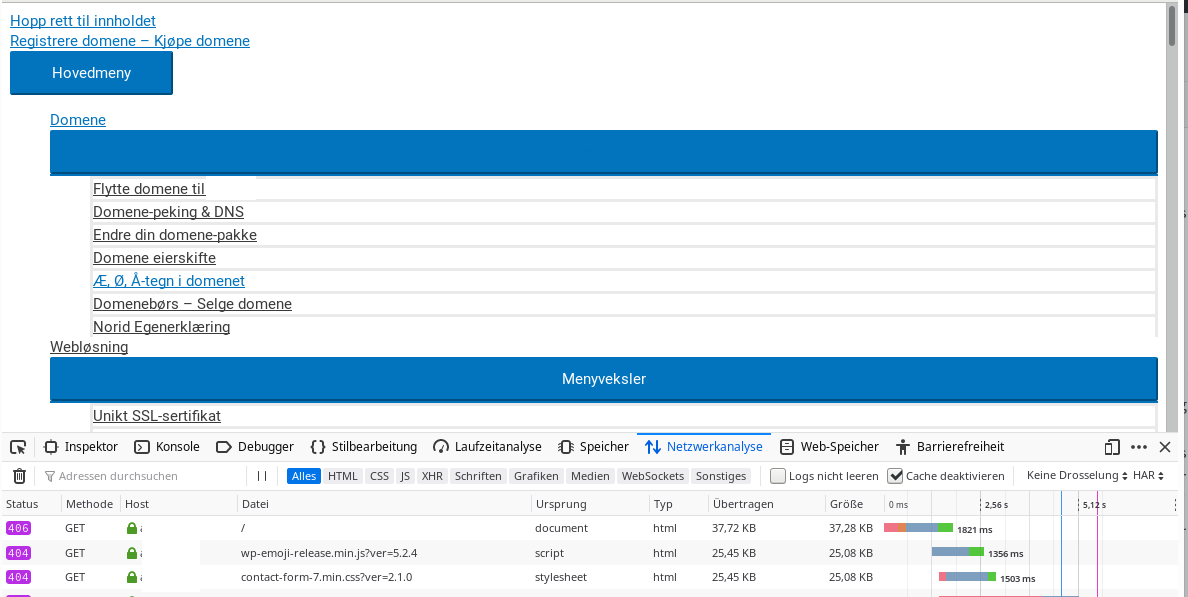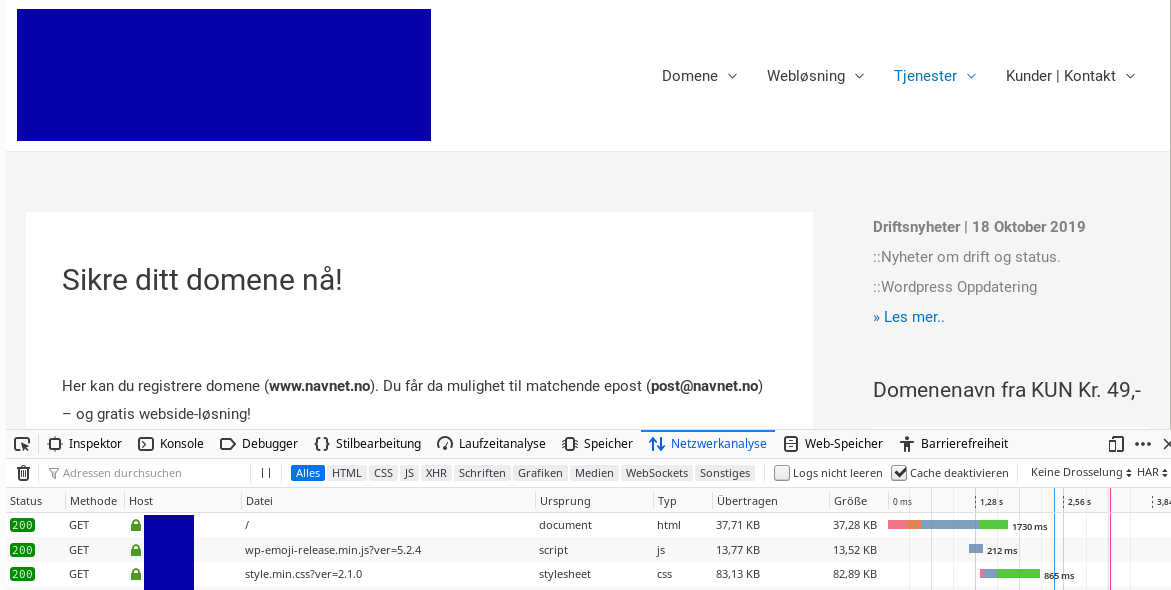It is very seldom that you are confronted with a HTTP status message of type 406 “Not acceptable”. However, this happened yesterday to a customer who uses a renowned hosting provider (in Norway) to publish his web-sites. The customer uses his own WordPress installation on hosted web-servers. His favorite browser is Firefox on a Win 10 desktop system. A week ago he could work without any restrictions. Then suddenly everything changed.
Access to website and WP admin interface broken due to security measures of the provider
At some point in time during last week the hosting-provider changed his security policies on his (Norwegian) Apache servers. The provider seems to have at least changed settings of the “mod_security” module – and thereby started to eliminate old browsers by some rules. (Maybe they even introduced the use of the mod_security module for the first time ?). To implement mod-security with a reasonable set of rules basically is a good measure.
However, the effect was that our customer got a 406 error whenever he tried to access his web-site with his Firefox browser. The “406 Not Acceptable” message indicates that a web server cannot or will not (due to some rules) satisfy some conditions in the HTTP GET- or POST-request. Our customer uses the latest version of Firefox. He tested whether he got something similar on a test installation of one of our hosted servers in Germany. Of course not.
A subsequent complaint of our customer was answered by his provider; the answer in a direct translation says:
Contact the Firefox technicians or use Chrome!
Very funny! Our customer asked us for help. We tested the web-servers response with multiple browsers from Linux and Windows desktops. The problem seemed to exist only for Firefox and only on desktop systems. This already indicated a strange server reaction to the HTTP “User-Agent” string.
But this was only part of the strange experience our customer got due to new security measures. In addition his provider enforced the usage of an Apache htaccess password (Basic HTTP user authentication) for all users who maintained their own WordPress installation on the hoster’s web-servers. Our customer suddenly needed to provide a UserId and a password to get access to his WordPress installation’s “wp-admin”-directory. We found out about this intentionally imposed restriction by having a look at the public web site of the provider. There, in a side column, we found a message regarding the new restriction. Customers were asked there to contact the hoster’s specialists for required credentials. Our customer had not been directly informed by the provider about this new policy. So, we just sent the provider a mail and asked him to give us the authentication data to the admin folder of our customer’s WP-installation. We got it one day later via email.
In my opinion these procedures indicate some mess we are facing with improperly handled IT-security activities these days.
Some comments regarding enforced HTTP Basic Authentication for WP’s admin directory
Comment 1: It is, of course, OK to enforce a HTTP password access to directories of a web server. But this is only an effective protection measure if the provider at the same time enforces general TLS/SSL encryption for the access to the hosted web-sites. Otherwise the password would be sent in clear text over the Internet. However, you can still work with a WordPress installation or other CMS-installations on the provider’s web-servers without any SSL certificate. Our customer has a SSL-certificate – but he had to pay for it. Here business interests of the provider obviously collide with real security procedures.
Comment 2: Personally, I regard it as a major mistake to set a common UserID and a fixed permanent password for customers and send
these credentials to a web-admin via an unencrypted email. Ironically enough the provider asked the receiver in the mail to take note of the password and then to destroy the mail. So, mails on the customers mail system are dangerous, but the transfer of an unencrypted mail over at least partially unencrypted Internet lines is not?
Hey, we are not talking about a one time password here – but permanent credentials set and enforced by the provider. The CPanel admin tool offered by the hosting provider does NOT allow for the change of the fixed htaccess password set by the provider’s admins.
Furthermore, why announce this policy on a public website and not inform the customers via a secure channel? Next question: How did they know that we were authorized to request the access data without contacting our customer first ???
The mess with the User-Agent string
Also interesting was the analysis of the Firefox problem. We can demonstrate the effect on the provider’s own website. Here is what you presently (18.10.2019) get when opening the homepage of the provider with Firefox from a Linux desktop:
And here is what you get when you manipulate the User-Agent string a bit:
The blue rectangles have been added not to directly show the provider’s name. Note the 406 error message in the FF developer tool at the bottom!
Well, well … Our customer got the following when opening his own web-page:
Some analysis showed that we get a correct display of the web-site on the same browser if we manipulated the HTTP User-Agent-string for Firefox a bit. One way to do this is offered by the web developer tools of Firefox. However, there are also good plugins to fake the User-Agent string.
The next question was: What part in the User-Agent-string reacted the provider’s Apache servers allergic to?
The standard User-Agent-string of Firefox in a HTTP-GET- or POST-request is defined to have the following structure:
Mozilla/5.0 (platform; rv:geckoversion) Gecko/geckotrail Firefox/firefoxversion
This can be learned from related explanations of mozilla.org:
Firefox User Agent string
“geckotrail” can be an indication of a version or a date. However – quotation:
On Desktop, geckotrail is the fixed string “20100101”
And when we check the User-Agent-string for Firefox on e.g. a Linux desktop we indeed get:
Mozilla/5.0 (X11; Linux x86_64; rv:68.0) Gecko Firefox/68.0
and
Posted in Security und Security-Tools, Web - Browser, HTTP, HTML, CSS | Tagged htaccess password, HTTP, improper security measures, User-Agent string, web hosting provider, Wordpress



